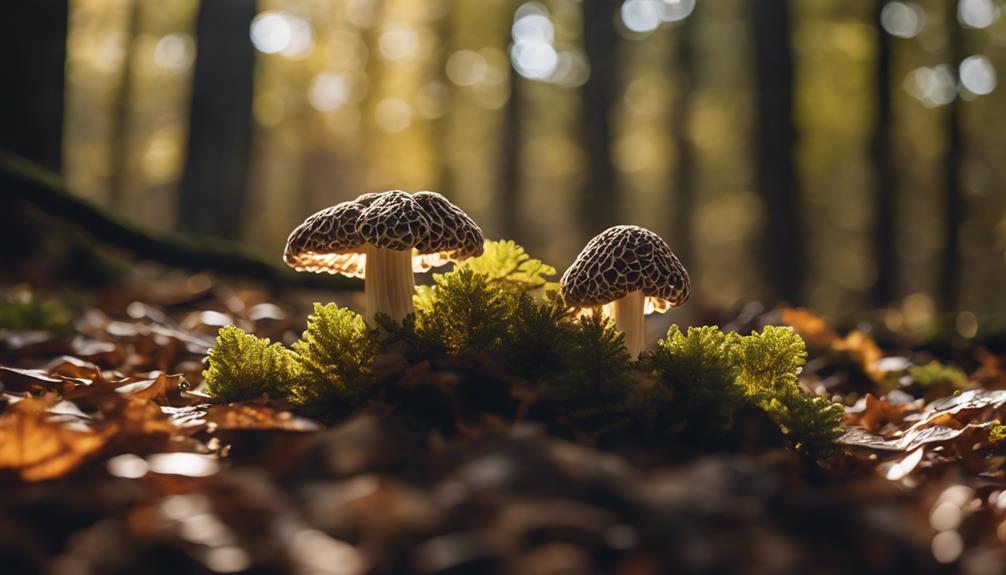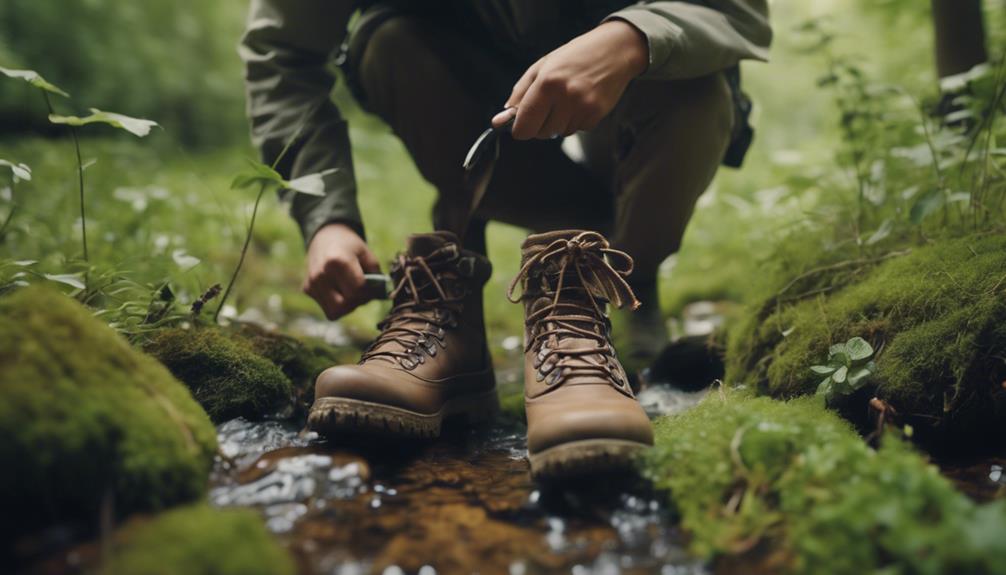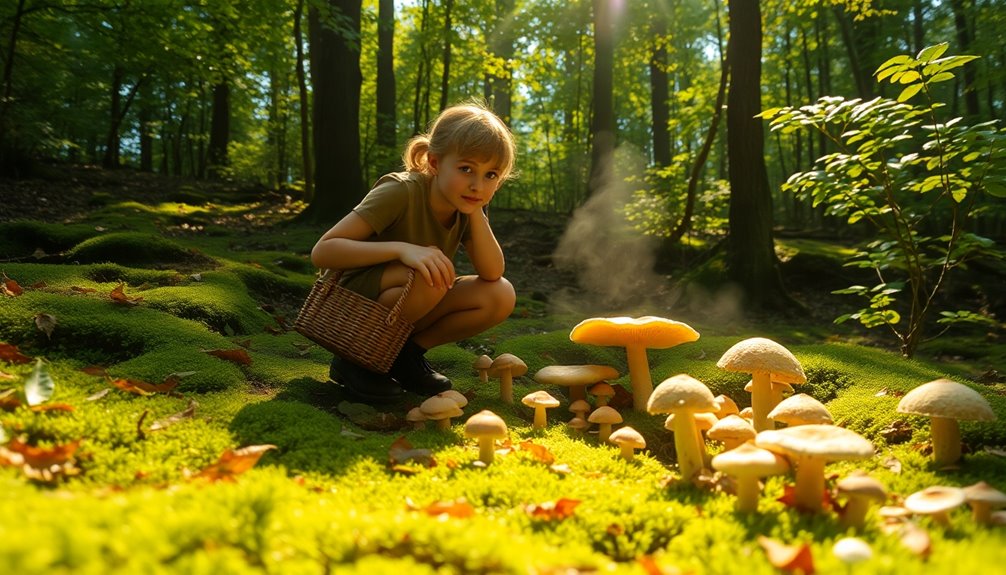To locate hard-to-find Morel mushrooms, seek out cone-shaped caps with crevices, a hollow interior, and caps attached to the stem. Look in the vicinity of ash, elm, or oak trees during the spring season when soil temperatures are approximately 50°F. Steer clear of poisonous look-alike mushrooms that have solid, fibrous interiors and wrinkled caps. Explore areas with dappled sunlight and well-drained soil after spring rainstorms. Specifically, Morel mushrooms can be found near Shenandoah River State Park, particularly near fallen trees and damp areas. Keep in mind that they are entirely hollow inside. Develop expertise in identification, knowledge of habitats, and foraging techniques to ensure a successful hunt.
Key Takeaways
- Hunt near ash, elm, or oak trees in spring.
- Look for cone-shaped caps with crevices.
- Check for hollow interior and attached cap.
- Search in moist, well-drained soil after rainstorms.
- Distinguish from false morels by color and texture.
Morel Mushroom Identification Tips
To properly identify morel mushrooms while foraging, look for their distinctive cone-shaped cap with crevices and hollow interior, as this sets them apart from false morels. Real morels are known for their unique appearance, which includes a cap that's attached to the stem and ranges in color from light to dark brown.
When hunting for morels, remember that they're hollow inside, unlike false morel mushrooms that have wrinkly caps and can be harmful if consumed. Pay close attention to the color as well; true morels are typically light brown, while some false morels may be reddish.
Seasonality and Habitat for Morels
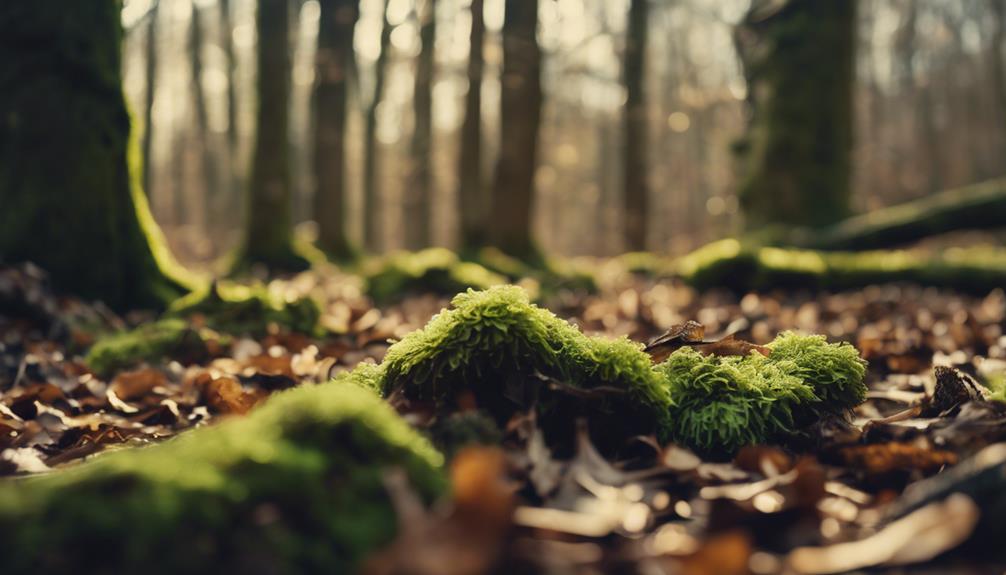
Morels thrive in specific habitats and are most commonly found during the spring months. To enhance your chances of a successful morel mushroom hunting expedition, it's important to grasp the seasonality and habitat preferences of these elusive fungi. Morels tend to appear when soil temperatures are around 50°F and after spring rainstorms. They often grow near host trees such as ash, elm, and oak, favoring moist, well-drained soil. When scouring for morels, your best bet is to look around south-facing slopes with dappled sunlight. Here's a breakdown of key factors to take into account when planning your morel hunting adventure:
| Morel Season | Host Trees | Soil Temperatures | Ideal Locations |
|---|---|---|---|
| Spring months | Ash, elm, oak | Above 50°F | South-facing slopes |
Avoiding Toxic Look-alikes

How can you distinguish toxic look-alikes from real morel mushrooms while foraging? Accurate identification is key in avoiding potential health risks associated with toxic mushrooms.
False morels, which are toxic, can be differentiated from real morels by their distinct characteristics. Real morels have a cone-shaped cap with hollow tubes, while false morels have a solid, fibrous interior. Additionally, false morels often have wrinkled caps, unlike the smooth caps of real morels.
It's essential to note that morels are light brown in color, whereas some toxic look-alikes, such as certain false morels, can have a reddish hue. Consuming toxic mushrooms, like false morels, can lead to severe health issues, so it's important to carefully distinguish between the two when foraging.
Always err on the side of caution and only pick mushrooms you can positively identify as real morels to ensure a safe foraging experience.
Foraging Techniques for Morels

When foraging for morel mushrooms, pay attention to the specific techniques that can help you successfully locate these prized fungi in their natural habitat. Morels tend to pop up in specific conditions that cause them to thrive. To help you find morels, look for areas that are found in nearly every environment, especially near poplar trees. Here are some tips for finding morels:
| Tips for Finding Morels | ||
|---|---|---|
| Hunt for morels near | ash, elm, or | poplar trees |
| Look in areas that | have moist, | well-drained soil |
| Check after spring | rainstorms and | warm nights |
| Search in locations | with dappled | sunlight |
Frequently Asked Morel Mushroom Questions
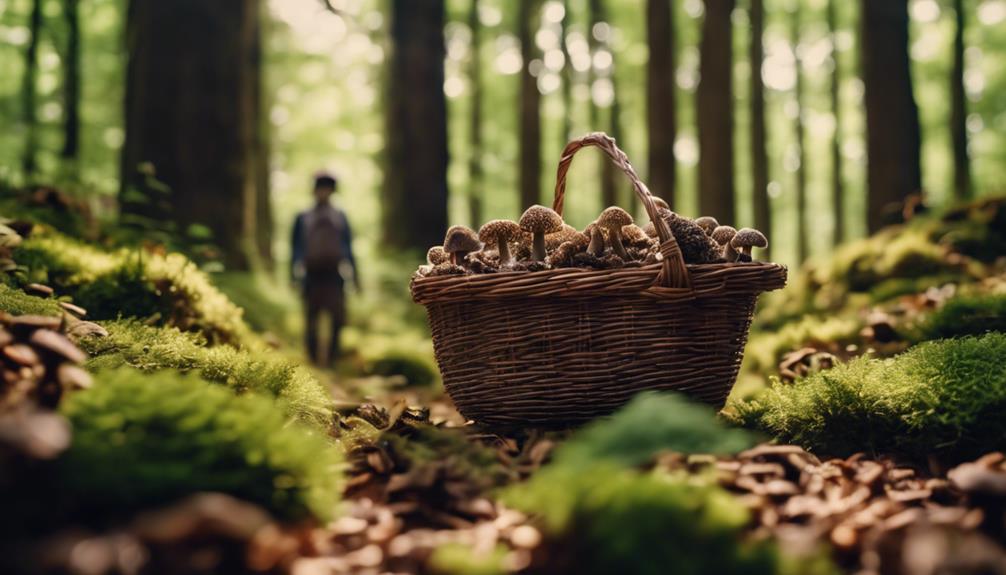
For those curious about morel mushrooms, exploring common questions can provide valuable insights into their identification and hunting techniques. Morels are highly sought-after wild mushrooms that grow in various regions, including Virginia near the Shenandoah River State Park between March and May.
To find morels, look for downed trees, limbs with bark, and moist areas where they thrive. A key distinguishing feature of prime morels is their hollow tubes compared to false morels with fibrous interiors. When cut open, morels resemble a brain and are completely hollow inside.
When hunting for morels, avoid dry, leaf-covered areas and focus on spots with moisture and plant growth. Remember that morels are typically the size of your thumb. Additionally, morels often appear after a wildfire burns an area, making these locations prime spots to search for these delectable mushrooms.
Happy hunting!
Frequently Asked Questions
What Are the Signs to Look for When Hunting Morels?
When hunting morels, look for cone-shaped caps with crevices, hollow interiors, in moist soil near trees like elm, ash, oak. Hunt after spring rainstorms, nights above 50°F. Identify accurately to avoid false morels, typically light brown.
Why Can I Not Find Morel Mushrooms?
You can't find morel mushrooms because they're elusive, needing precise conditions like moisture, temperature, and tree species. Timing, habitat, and short growing season also play a role. Their preference for specific environments makes them challenging to locate.
Do Morels Pop up Overnight?
Morels indeed pop up overnight due to ideal conditions like spring rainstorms. Moisture and warmth trigger rapid growth, causing these elusive mushrooms to seemingly appear out of nowhere. Keep a keen eye out!
What Time of Day Do Morels Come Up?
Do morels pop up overnight? Morels typically emerge during the day, with the best time for hunting being in the morning. The warmth of the sun helps morels grow, making early morning and late afternoon prime times to spot them.
Conclusion
You're now equipped with the knowledge and skills to uncover the elusive morel mushrooms in the wild. Remember to stay vigilant, follow the seasonality and habitat tips, and always be cautious of toxic look-alikes.
With the right techniques and a bit of patience, you'll soon be enjoying the delicious flavors of these prized fungi.
Happy foraging!

